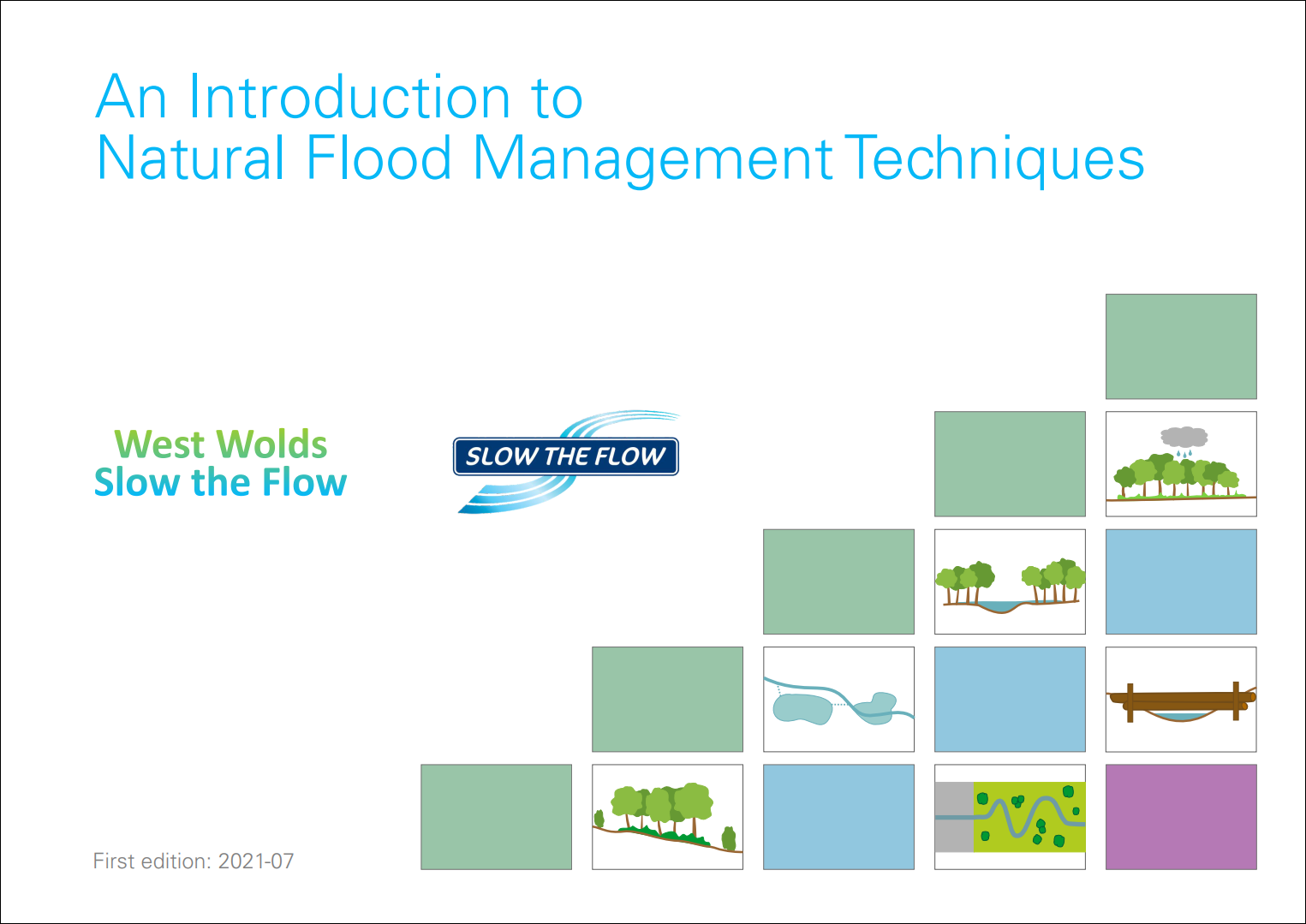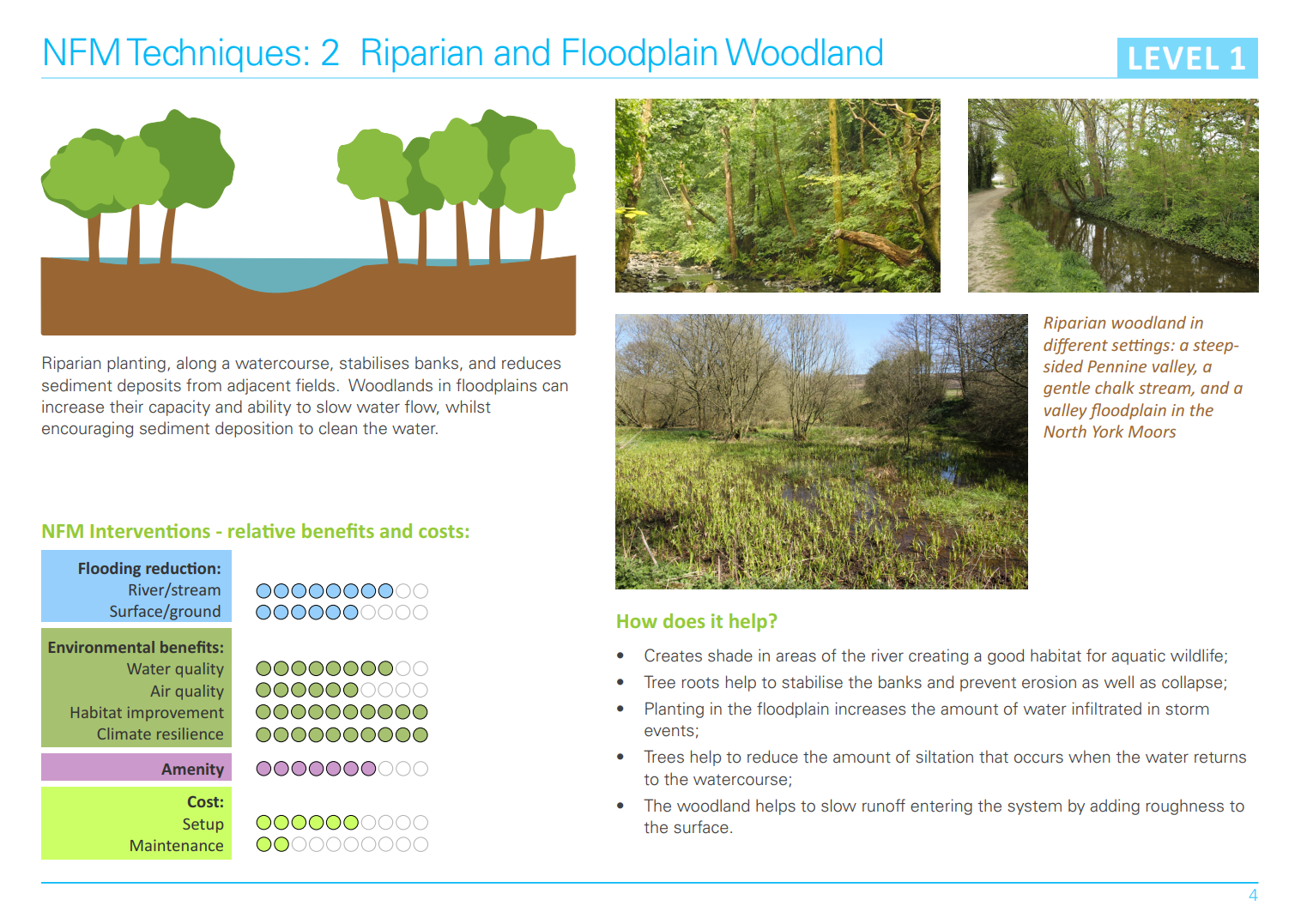Introduction to NFM Techniques
West Wolds Slow the Flow introduces new guidance - July 2021
We found ourselves wanting to explain Natural Flood Management to the public, landowners and farmers. What does it looks like, what are the different forms of NFM, and what are its respective benefits? When we looked at much of the guidance available online (and there is a lot) we found that much of it was highly technical and really quite involved!
So we thought that the best thing we could do is to produce out own - and to work with our good friends at Slow The Flow in Calderdale, to create a guide which would be useful to both organisations and further afield.
The document is here:
An Introduction to Natural Flood Management Techniques (7.4Mb PDF)In brief it provides an introduction to the principles of Natural Flood Management, explains the main sources of information used, and then works though the major NFM types, as follows:
- CatchmentWoodland
- Riparian and FloodplainWoodland
- Cross-SlopeWoodland and Hedgerows
- Soil and Land Management
- Leaky Barriers
- Re-profiling Land and Re-routeing Ditches
- Storage Ponds and Basins
- River and Floodplain Restoration
- Headwater Management
Each page provides a description, illustrations, relative benefits and costs, and explains how the intervention type helps.
We hope that our brief guide is useful to a lot of people taking their first steps into NFM. There are many other resources out there, including the heavyweight (423 pages!) CIRIA Natural Flood Management Manual, as well as the references cited in the Introduction to NFM.

